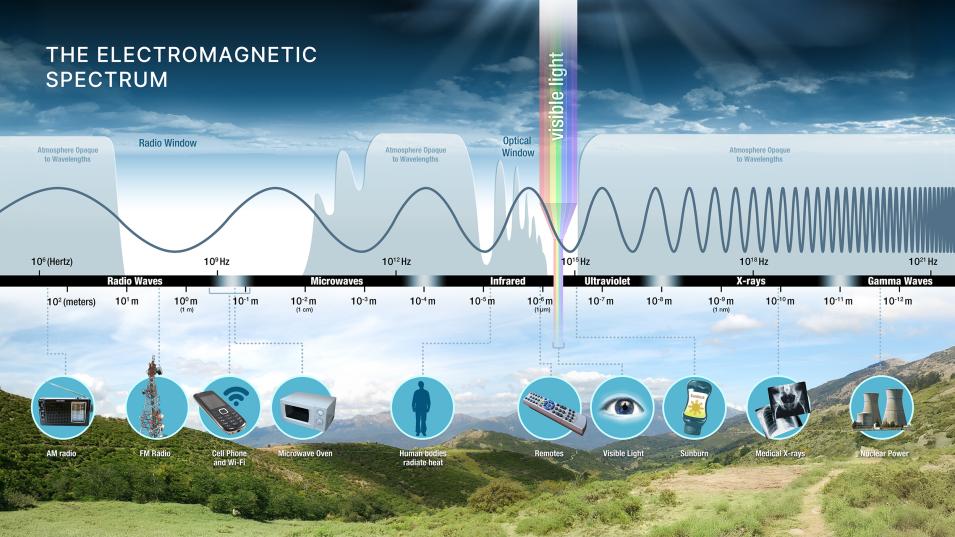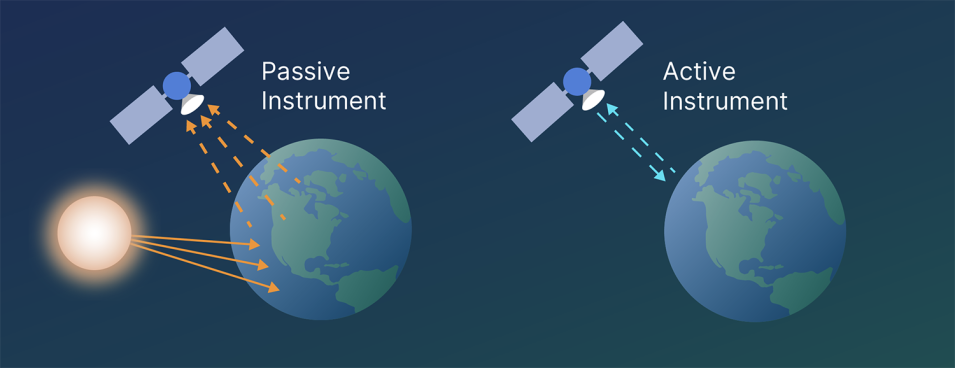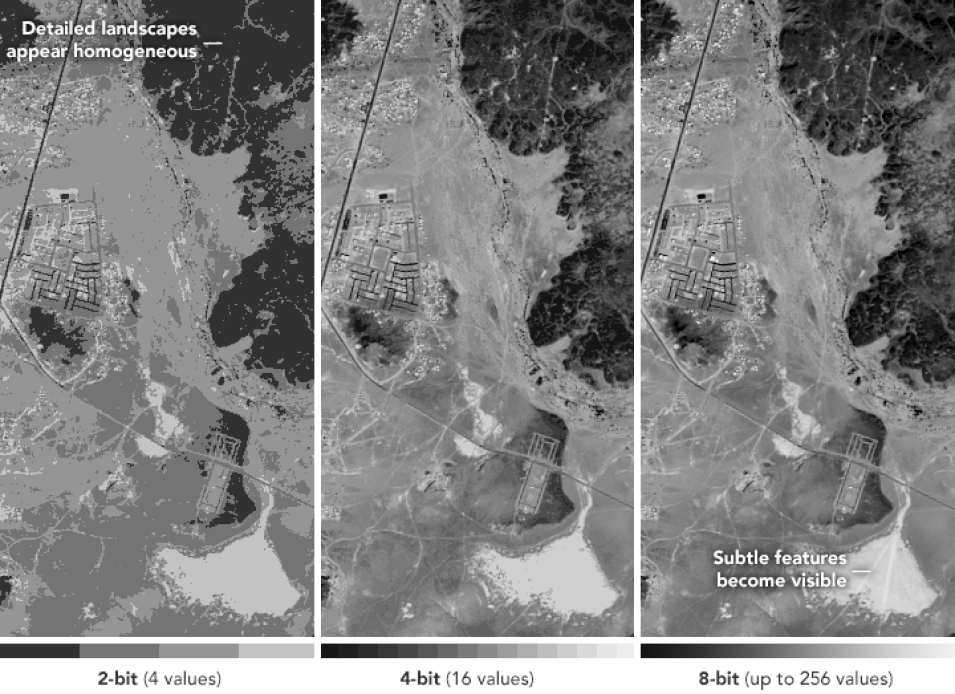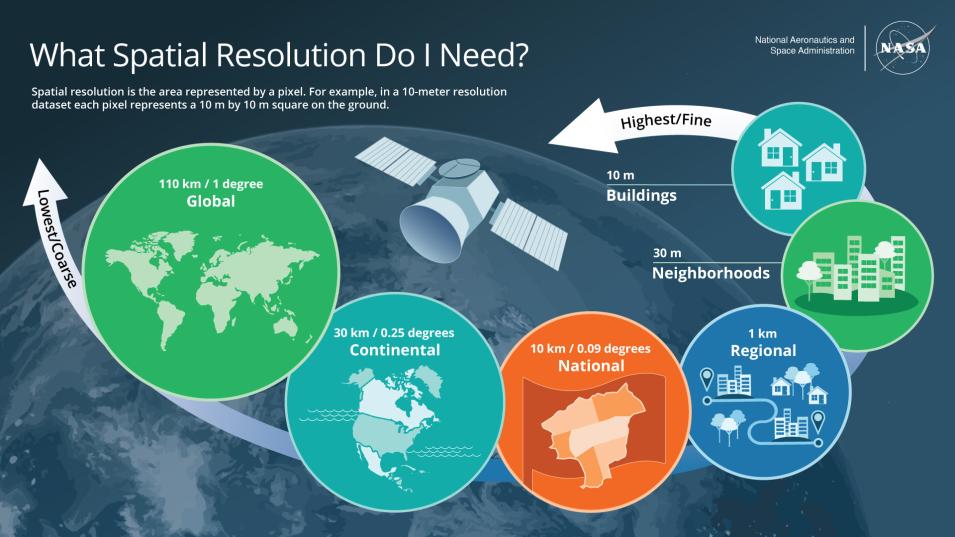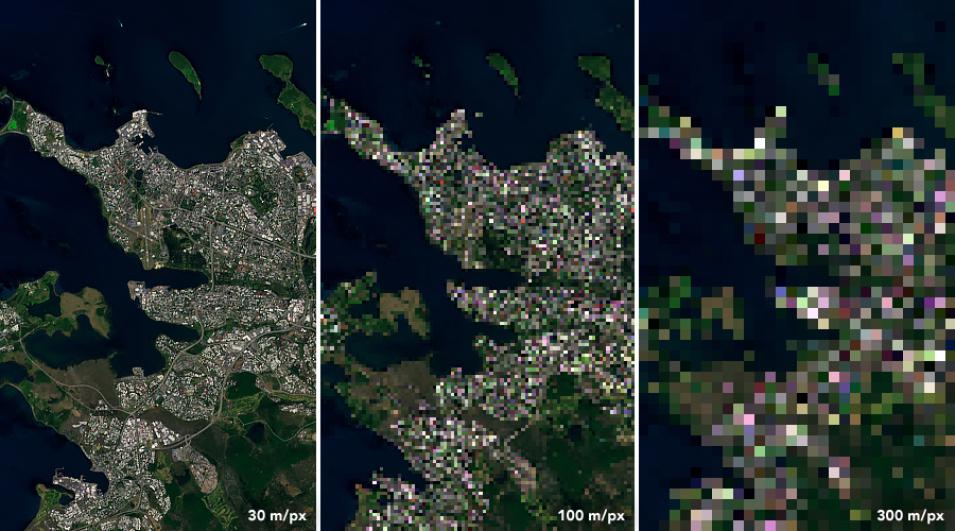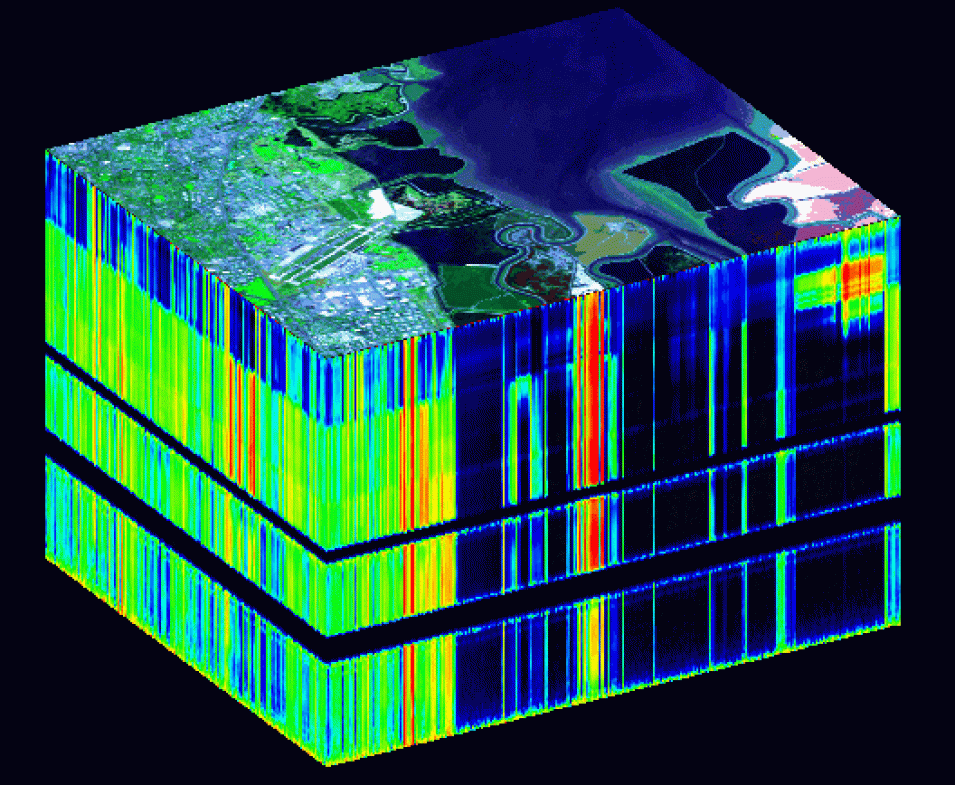What is Remote Sensing?
Remote sensing is the acquiring of information from a distance. NASA observes Earth and other planetary bodies via remote instruments on space-based platforms (e.g., satellites or spacecraft) and on aircraft that detect and record reflected or emitted energy. Remote instruments, which provide a global perspective and a wealth of data about Earth systems, enable data-informed decision making based on the current and future state of our planet.
For more information, check out the Tech Talk by NASA's Interagency Implementation and Advanced Concepts Team (IMPACT): From Pixels to Products: An Overview of Satellite Remote Sensing.
There is also an excellent ongoing Fundamentals of Remote Sensing training from the Applied Remote Sensing Training (ARSET) program.
Orbits
Space-based platforms can be placed in several types of orbits around Earth. The three common classes of orbits are low-Earth orbit (approximately 160 to 2,000 km above Earth), medium-Earth orbit (approximately 2,000 to 35,500 km above Earth), and high-Earth orbit (above 35,500 km above Earth). Platforms orbiting at 35,786 km are at an altitude at which their orbital speed matches the planet's rotation, and are in what is called geosynchronous orbit (GSO). In addition, a platform in GSO directly over the equator will have a geostationary orbit. A geostationary orbit enables a platform to maintain its position directly over the same place on Earth’s surface.
Low-Earth orbit is a commonly used orbit since platforms can follow several orbital tracks around the planet. Polar-orbiting platforms, for example, are inclined nearly 90 degrees to the equatorial plane and travel from pole to pole as Earth rotates. This enables instruments aboard these platforms to acquire data for the entire globe rapidly, including the polar regions. Many polar-orbiting platforms are considered Sun-synchronous, meaning that the platform passes over the same location at the same solar time each cycle. One example of a Sun-synchronous, polar-orbiting platform is NASA’s Aqua, which orbits approximately 705 km above Earth’s surface.
Non-polar low-Earth orbit platforms, on the other hand, do not provide global coverage but instead cover only a partial range of latitudes. The joint NASA/JAXA (Japan Aerospace Exploration Agency) Global Precipitation Measurement (GPM) Core Observatory is an example of a non-Sun-synchronous low-Earth orbit platform. Its orbital track acquires data between 65 degrees north and south latitude from 407 km above the planet.
A medium-Earth orbit platform takes approximately 12 hours to complete an orbit. In 24-hours, the platform crosses over the same two spots on the equator every day. This orbit is consistent and highly predictable. As a result, this is an orbit used by many telecommunications and GPS platforms. One example of a medium-Earth orbit platform constellation is the ESA (European Space Agency) Galileo global navigation satellite system (GNSS), which orbits 23,222 km above Earth.
While both geosynchronous and geostationary platforms orbit at 35,786 km above Earth, geosynchronous platforms have orbits that can be tilted above or below the equator. Geostationary platforms, on the other hand, orbit Earth on the same plane as the equator. These platforms capture identical views of Earth with each observation and provide almost continuous coverage of one area. The joint NASA/NOAA Geostationary Operational Environmental Satellite (GOES) series of weather platforms are in geostationary orbits above the equator.
For more information about orbits, please see NASA Earth Observatory's Catalog of Earth Satellite Orbits.
Observing with the Electromagnetic Spectrum
Electromagnetic energy, produced by the vibration of charged particles, travels in the form of waves through the atmosphere and the vacuum of space. These waves have different wavelengths (the distance from wave crest to wave crest) and frequencies; a shorter wavelength means a higher frequency. Some, like radio, microwave, and infrared waves, have a longer wavelength, while others, such as ultraviolet, x-rays, and gamma rays, have a much shorter wavelength. Visible light sits in the middle of that range of long to shortwave radiation. This small portion of energy is all that the human eye is able to detect. Instrumentation is needed to detect all other forms of electromagnetic energy. NASA instruments utilize the full range of the electromagnetic spectrum to explore and understand processes occurring on Earth and on other planetary bodies.
